|
|
Post by sdboers on Feb 23, 2015 19:34:43 GMT -5
Since I will be embarking on a continuous water change project shortly - I decided that I wanted a way to clean out the grunge at the bottom of the tank without removing water. That will already be happening on a continuous basis...  The basic idea was to use an undersink cartridge filter and fashion the plumbing so it could hang on the side of the tank. Hook a pump to the outlet to pull water through it, and then hook the gravel siphon up to the inlet to pick up all the crud. The crud gets pulled out by the filter, and the clean water goes back to the tank through the powerhead. Given that I had various pieces of "stuff" lying around, this was a fairly inexpensive endeavour. So here is the price list of what I needed: - Water filter (housing & cartridge): $28
- 4 PVC Elbows: $3.52
- 4 PVC Male threaded adapters: $3.84
And here is the stuff I had lying around that I also needed: - About 8" of 3/4 PVC pipe
- PVC glue
- Plumbers tape
- Gravel siphon and hose
- Powerhead
First you need the filter: 
Here are the parts needed: 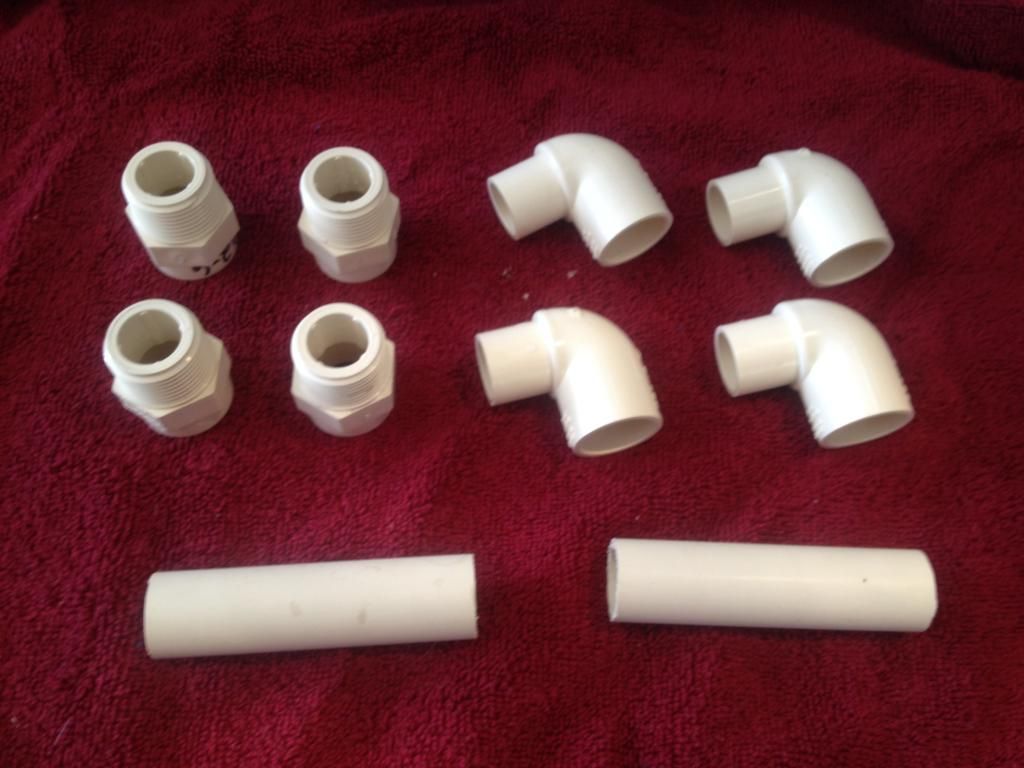
Start with plumbers tape on the threaded adapters and screw them into the filter: 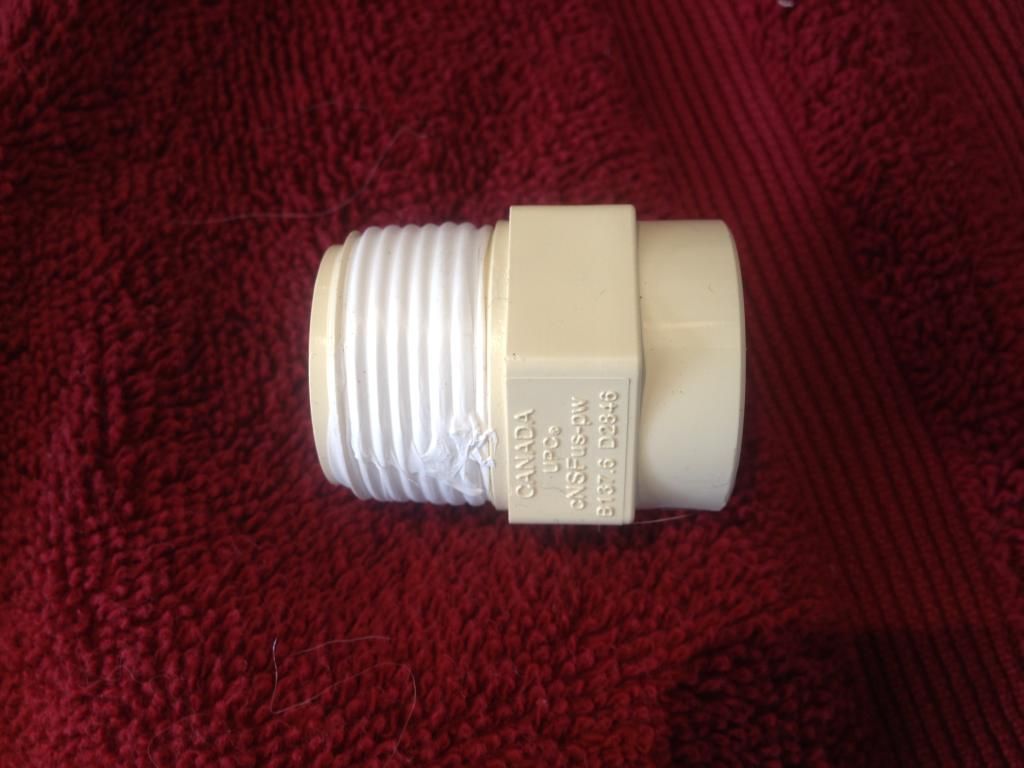 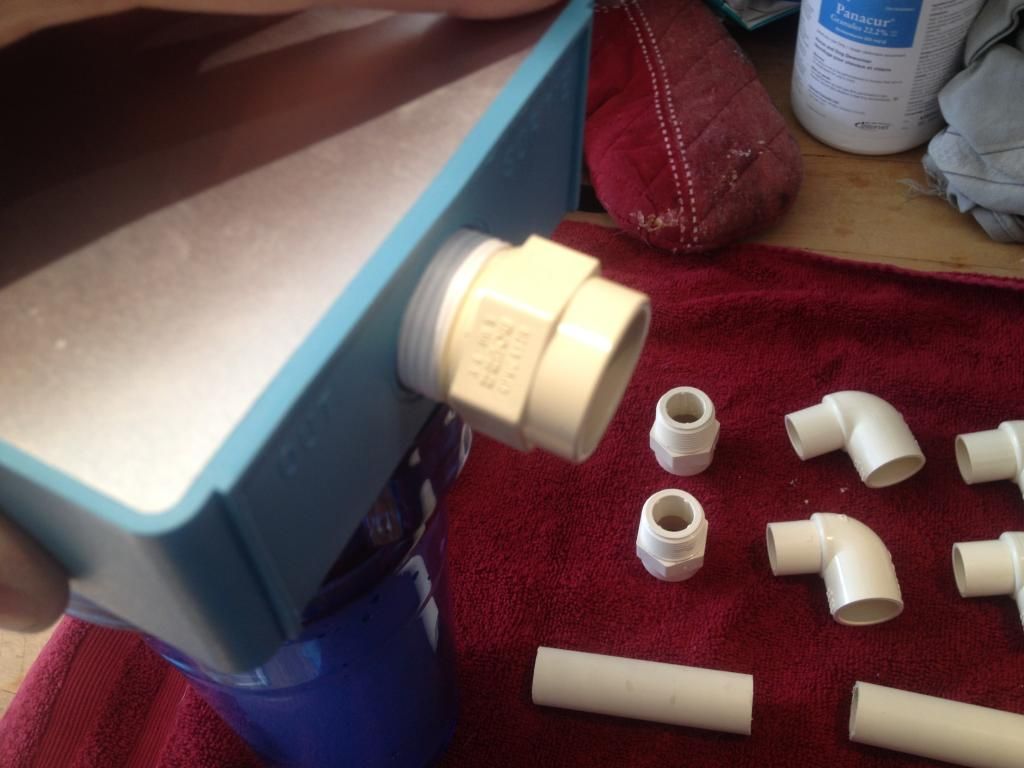 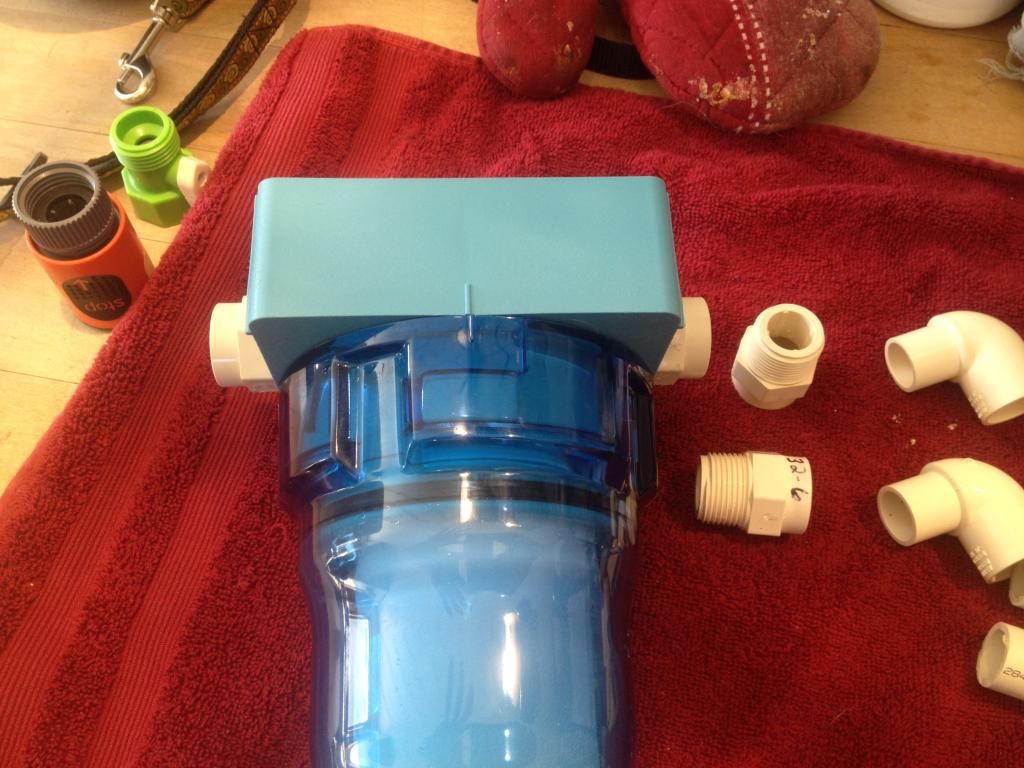
Glue one elbow on the 3.5" piece of pipe (x2) and the other one onto the other threaded adapter (x2). 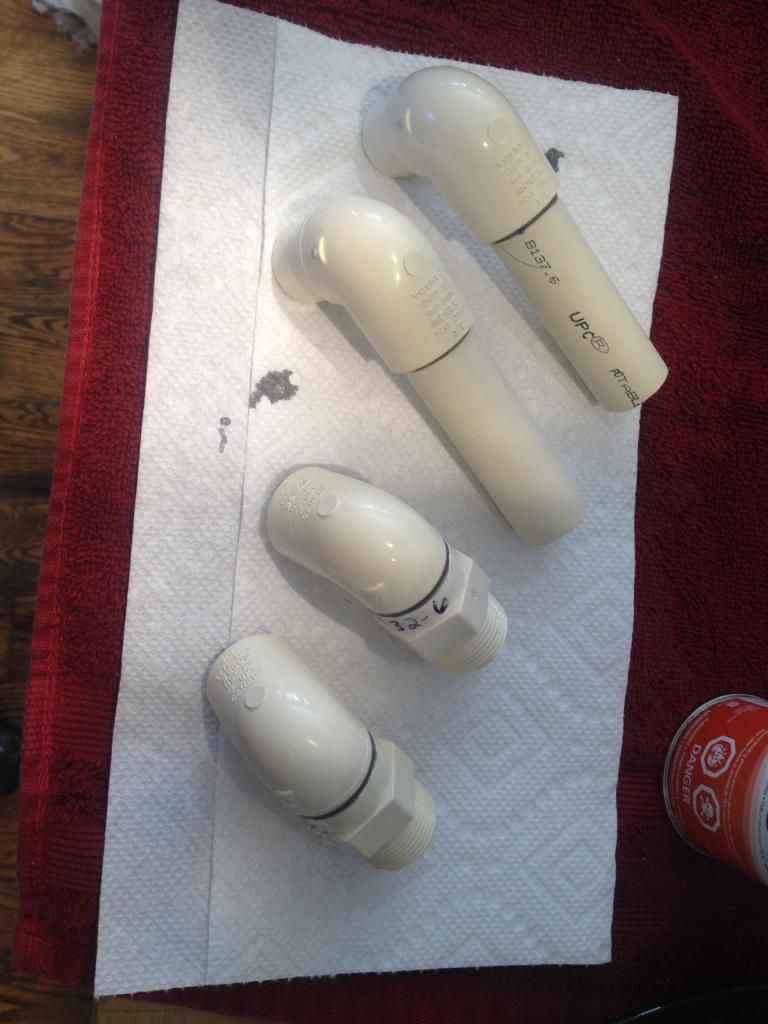
Glue the pipe with the elbow into the threaded connectors that are already on the filter (as per below): 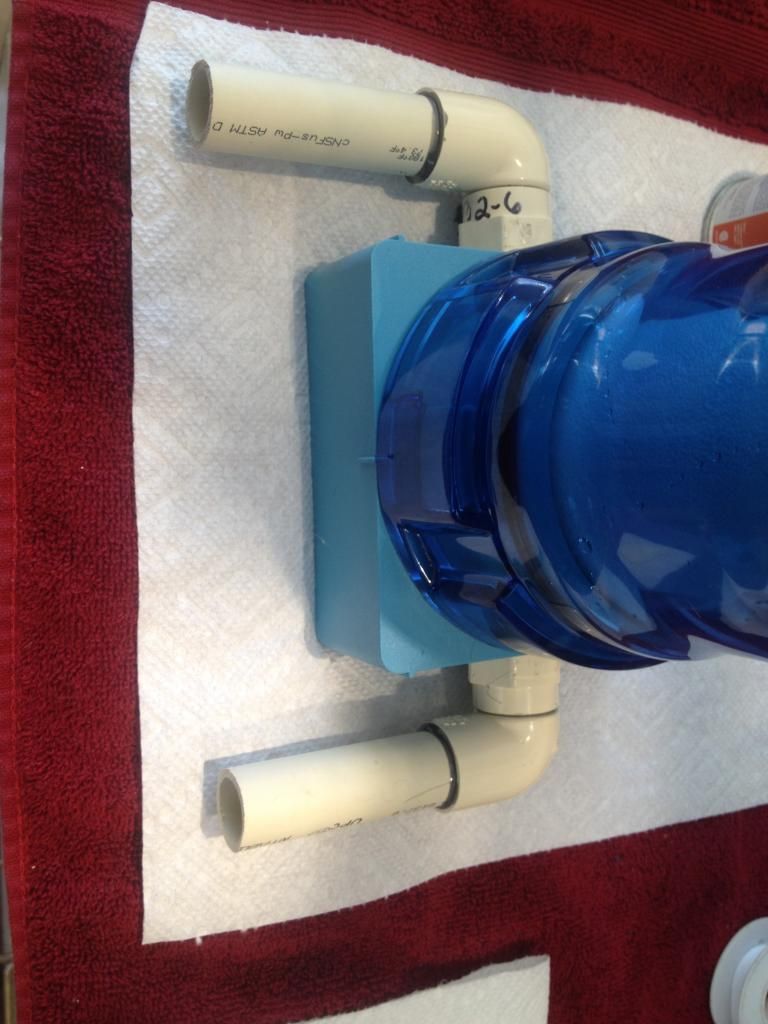
Glue the other elbows and threaded connectors on so that they face downwards (as shown): 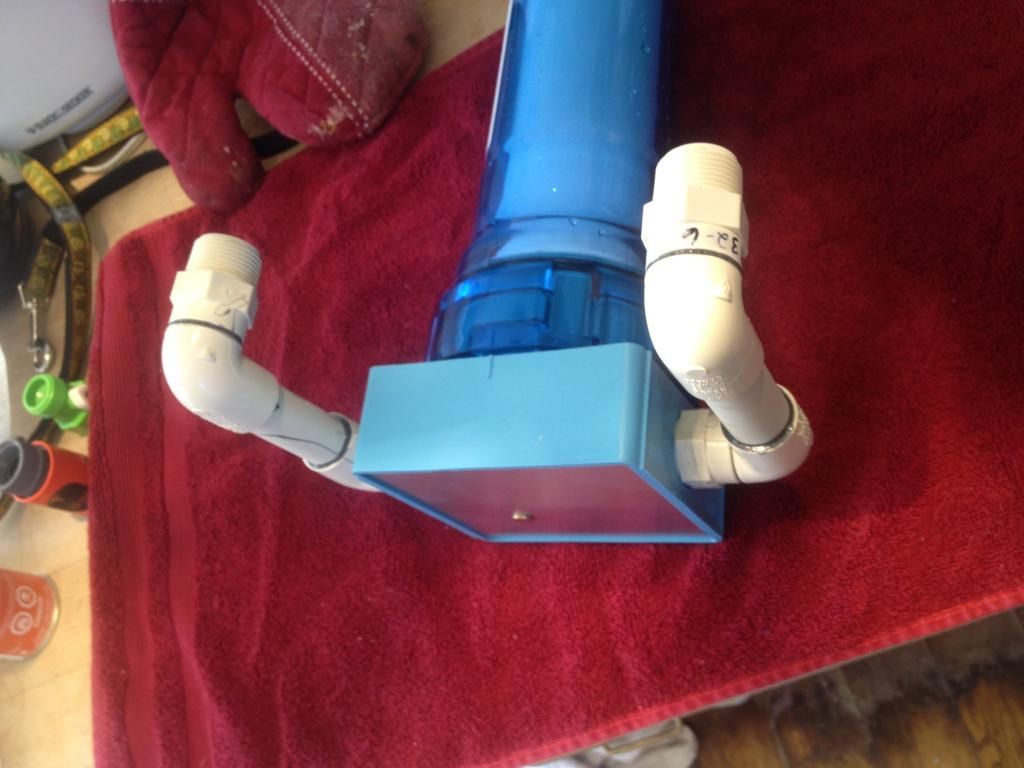  
And here it is hanging on the tank - ready to vacuum: 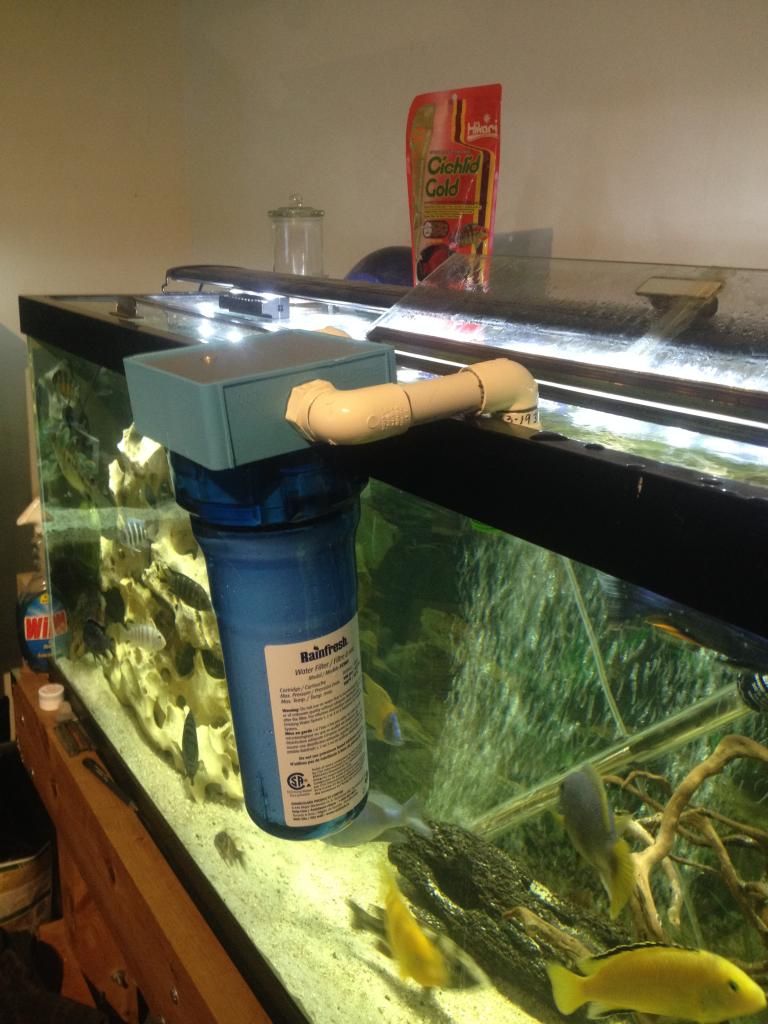
If I get some time tomorrow - I'll post a short video hooking it up and doing some vacuuming... 
Sean.
|
|
|
|
Post by sdboers on Feb 24, 2015 8:03:50 GMT -5
Ok - more pics and hopefully a video tonight when I get home from work. I picked up a couple of quick connect hose fittings this morning that I will screw onto the two ends that hang down into my tank above. Funny - these quick connects are the most expensive part of the build. Not needed, but I think I will like the convenience. The filter inlet will connect to the gravel vacuum. The filter output connects to a powerhead already in my tank to draw water through the filter. Note that I'm choosing to pull the water through the filter so that the powerhead will only process clean water. If it were pushing the water through you risk damaging it with any sand and gravel picked up as well. I did a quick test last night and I'm quite encouraged by the results.  I'll have to see if the powerhead is powerful enough for the level of suction I'm looking for - or if I need to drop in a stronger pump. The quick connect that I will put on the suction side has a ball valve as well, so I can put a powerful pump on and then simply choke the suction down as required with the ball valve. Sean. |
|
|
|
Post by sdboers on Feb 24, 2015 17:39:15 GMT -5
Well here are a few finishing touches... I added quick connects to the end of the PVC pipe to make it easy to hook up the hoses: 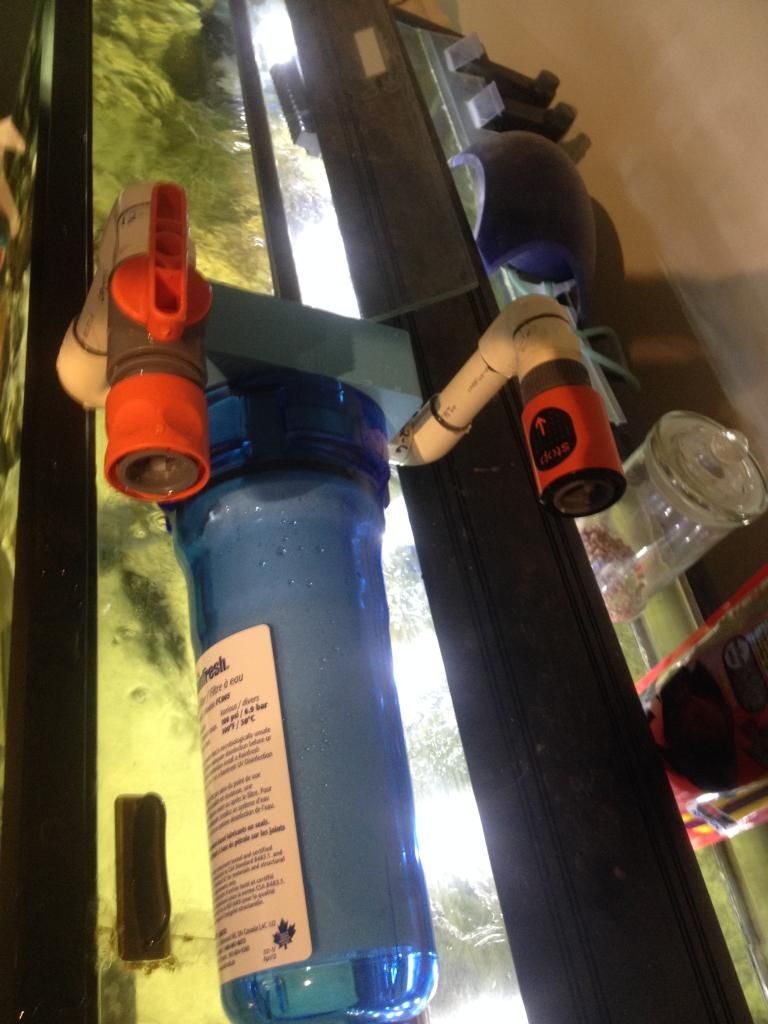 As mentioned, the vacuum is run by a powerhead. Use the output of the powerhead to fill the filter with water initially: 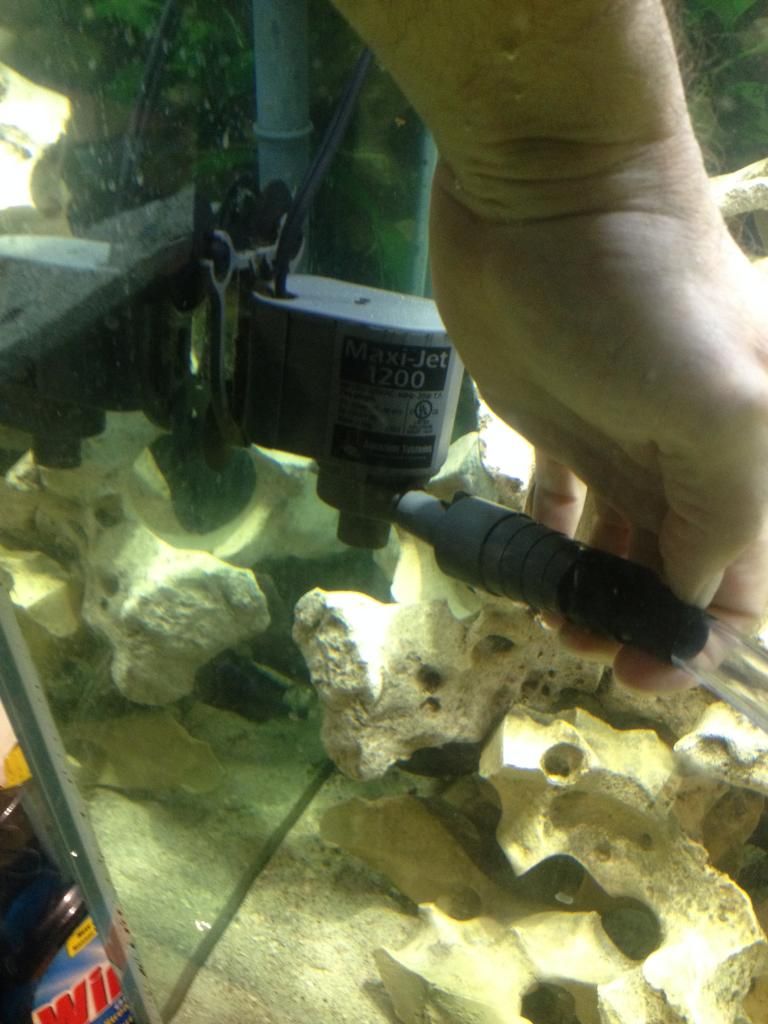 After the filter is primed, hook up the outlet of the filter to the inlet of the powerhead or pump: 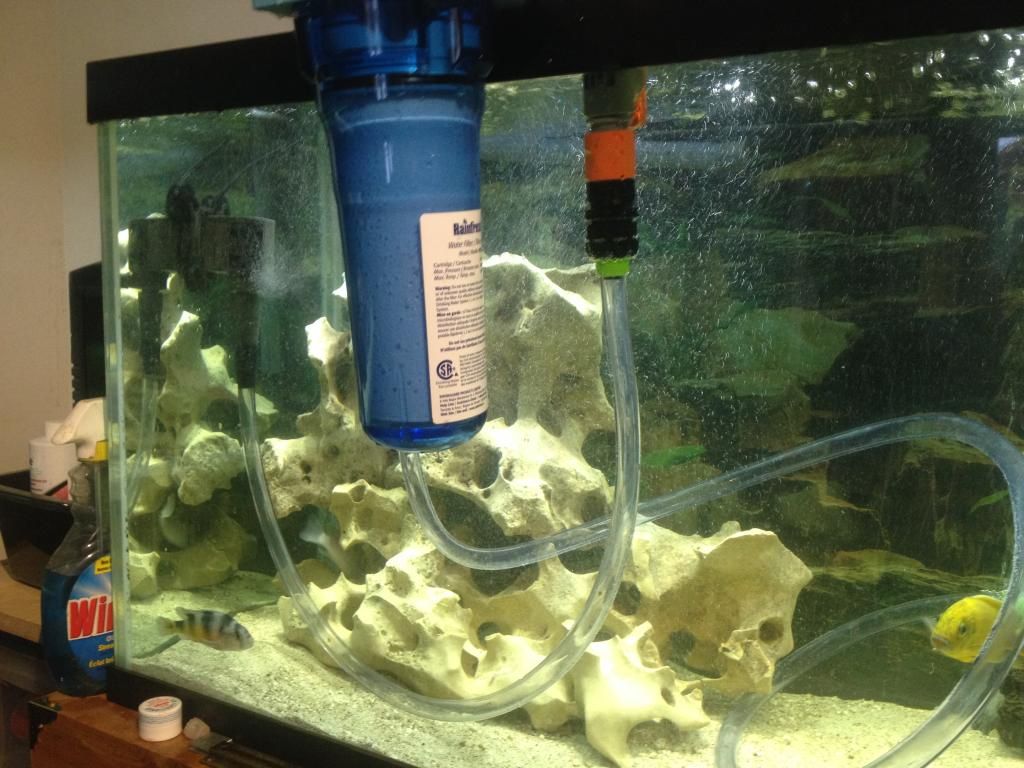 And connect the input on the filter to the gravel siphon:  You are officially ready to vacuum! And here is a video of it in action... Let me know what you think! Sean. |
|
|
|
Post by Carl on Feb 24, 2015 17:48:44 GMT -5
Looking Good!!!  One thought as to "pulling" the water is that my experience is that pulling water through any type of media does not wok as well. I would agree that it is much better on the pump itself to have clean water passing through it, but the pumps I have used have their head pressure on the exhaust side of the pump. The Rio HF series will have a lot more head pressure and thus vacuum than the Maxi-Jet and would probably be a good pump to consider was the micron cartridge gets more clogged and thus adds more head pressure www.americanaquariumproducts.com/RioPumps.htmlAnother though is an actual siphon into a midway container then a water pump that returns the water back to the aquarium; this too will not have the pull as the micron filter gets more and more filled with debris. However you video shows a much cleaner system than I am proposing Carl |
|
|
|
Post by devonjohnsgard on Feb 24, 2015 18:59:54 GMT -5
This was a great idea. Thanks for sharing!
|
|
|
|
Post by sdboers on Feb 24, 2015 19:49:43 GMT -5
Totally agree on which end of the pump is better to connect to from a pressure perspective. The choice to reverse was deliberate as you know. I'm thinking if I go "overkill" on the pump, then any losses due to pulling instead of pushing will be made up by the excess capacity. For the filter cartridge I went with a coarse 30 micron as opposed to a finer 5 or 1 micron. Should help with flow. Replacements are only $4 each.
Sean.
|
|
|
|
Post by Carl on Feb 25, 2015 10:37:12 GMT -5
I think 30 micron was a perfect choice.  Anything lower than 20 micron would likely clog way too fast when used with aquarium water Carl |
|
swimfin27
Full Member
  Breeding is the ultimate joy!
Breeding is the ultimate joy!
Posts: 67 
|
Post by swimfin27 on Mar 14, 2015 18:02:39 GMT -5
I really like this idea and would like to thank you for sharing it. I was at Home Depot today looking at filters and the only ones I noticed that LOOKED like yours were GE brand filters. The filter Cartridges did not have the micron size of the filter on them so it was very confusing on which one to purchase. If I may ask what model filter did you use and type of cartridge(Part Number if possible)? Thank you!
|
|
|
|
Post by sdboers on Mar 15, 2015 14:49:16 GMT -5
|
|
|
|
Post by sdboers on Mar 19, 2015 13:59:23 GMT -5
Today was the first full tank vacuuming since I created this contraption - and I'm going to have to colour it a failure. The hose would easily block up substrate and stop vacuuming.
I think this is due to three problems:
1) I just don't think a MaxiJet 1200 powerhead is strong enough to create the desired level of suction
2) I did the vacuuming without the larger gravel vac attached (just the hose), so I got a bit more substrate than I wanted
3) The quick connect hose fittings - while convenient - constrict the size of the opening at the connection making it easier for items to clog the hose
Solutions will be to ditch the quick connect fittings and swap in a stronger pump. I'll report back when I've done those and let you know how it turns out.
Sean.
|
|
|
|
Post by Carl on Mar 19, 2015 14:58:58 GMT -5
Another tip that goes for any vacuum, whether a siphon powered or re-circulating one such as this is to constantly lift the vacuum bell and simultaneously pinch the tubing to force the substrate back down. From the "Aquarium Cleaning Article"  Reference: www.americanaquariumproducts.com/Aquarium_cleaning.htmlCarl |
|
|
|
Post by sdboers on Mar 19, 2015 16:51:05 GMT -5
Carl - yeah - I was bad. I didn't even have the larger diameter fitting on due to the low suction. I was just using the hose to suck up gunk, so any substrate I accidentally grabbed was gone too quickly... With higher suction, I can probably put the larger "bell" back on and do exactly as you show above.
Sean.
|
|
 Or please consider a donation, even just $5 helps. If even 25% of users of this information donated just $5, it would be more income than one year of sales (currently less than 1/1000 of a % donate)
Or please consider a donation, even just $5 helps. If even 25% of users of this information donated just $5, it would be more income than one year of sales (currently less than 1/1000 of a % donate)





















